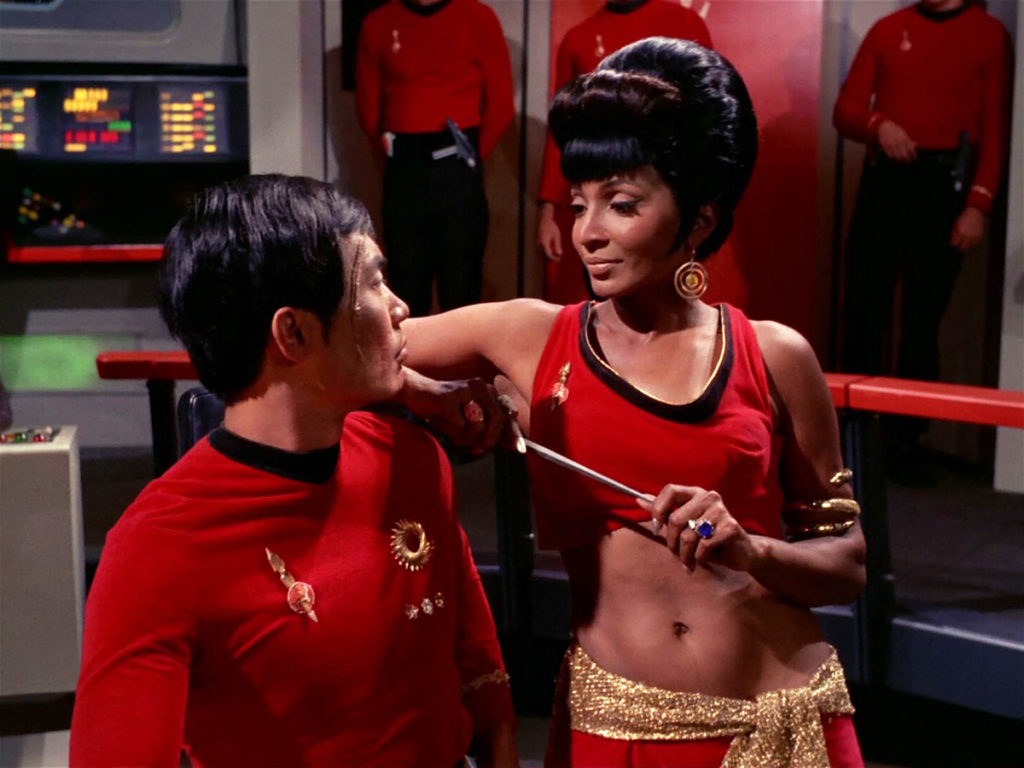
The TOS episode “Mirror, Mirror” cemented the idea of an alternate, “evil” universe in the public imagination, and the plot became a recurring theme, in both DS9 and Enterprise. Looking at the ways in which costume designers William Theiss and Robert Blackman dressed the occupants of the Mirror Universe to differentiate them from their “good” counterparts gives us an interesting insight into how we expect “evil” to look.
As the aesthetics of Star Trek were being developed, the decision to portray Starfleet as non-militaristic was in part achieved on screen by Theiss’ uniform design. The colorful sweaters, cropped pants and mini dresses had much more in common with the fashions of the time, popularized by young celebrities like Twiggy and the Beatles, than with traditional military uniform.
When Kirk is transported aboard the Mirror Enterprise, he re-materializes wearing a gold vest with epaulettes and a sash, decorated with military insignia. The gold sash and epaulettes were features of officers’ dress uniforms in the US and British military during the 18th and 19th centuries, creating the idea of a Starfleet more in line with the imperialist and colonialist ambitions of the past than the peaceful explorers of Roddenberry’s utopian future.
The extra insignia being worn by all the officers, as well as the knee-high boots that complete the uniforms, reference the appearance of the fascist military in Europe during World War Two, while the sleeveless vest and personal weaponry suggest a culture based on machismo and brute force.
Uhura’s two-piece costume is used for shock value and to demonstrate the moral depravity of the Mirror Universe; when the episode aired in the late 60s no “respectable” woman or workplace would have viewed her outfit as an appropriate work uniform!
The Mirror Universe episodes of Enterprise, “Through a Mirror Darkly” Parts 1 and 2, creates visual links to its TOS predecessor through a continuity of costume detailing. The male Mirror Enterprise crew wear their usual flight suits but with modifications that echo the references to 20th century fascist and 19th century imperialist/colonialist military uniforms, most notably the silver and red detailing and military insignia on the black dress uniforms, and the Sam Browne belts. In contrast, Reed and the other security personnel wear camouflage print overalls and body armour, suggesting modern mercenaries or survivalist vigilantes.
The women’s costumes, with their tight fitting trousers and cropped jackets, are obviously intended to tie in with the design of Uhura’s two-piece uniform, but the design falls flat for me for several reasons.
The shock value is gone from the Enterprise outfits: this navel-baring style had already been popularized by celebrities like Britney Spears and these outfits were widely available as a consumer fashion trend by the time the episode aired. The body-policing and fat-shaming that went along with the trend suggested this was something that should only be worn to present an “acceptable” woman’s body for the male gaze. The uniforms emphasize the misogyny of the Mirror Universe but I don’t think it’s done critically; the (presumably bad) male gaze of the crew isn’t differentiated from the gaze of the audience.
Hoshi spends a lot of screen time in her underwear in “In a Mirror, Darkly,” and although the design of the underwear is fairly neutral, her characterization in this episode plays into an Orientalist trope – an Asian woman controlling a white man with her sexual prowess – and this isn’t the only example I’ve seen of exoticization in the Mirror Universe.
The Mirror Universe Spock’s Chinese-influenced uniform jacket and shirt seem to be unique to him, marking the Vulcan out as “other.” This is lazy and appropriative costume design practice, sadly still in use today, which assumes a predominantly white audience who will read non-Western but non-specific “ethnic” clothing as shorthand for the “exotic other.”
It also crops up in Intendant Kira’s “harem” in the DS9 episodes “Crossover” and “Through the Looking Glass,” where styling reminiscent of the wildly inaccurate Old Hollywood depictions of the Middle East recreates the racist trope of linking the “exotic other” and aggressive or rampant sexuality.
The crew of DS9 have several interactions with their counterparts in the Mirror Universe over the course of five episodes, and Kira’s counterpart is the character who makes the biggest impact.
The Intendant’s uniform is similar in silhouette to Major Kira’s, but the black shiny fabric and harness have overtones of fetish subculture. This seems to be a recurring theme on the Mirror Terok Nor; Odo’s uniform is similar in style but is now black and shiny, and even the Dabo girls’ colorful and sparkly outfits have been replaced with strappy black bondage-style costumes.
Star Trek usually portrays relationships in a traditional/heteronormative context, so it is rather problematic that a predilection for BDSM or exhibitionism, along with bi/pansexuality, are the characteristics that differentiate the evil Intendant Kira from her “good” counterpart.
The costume design for other Mirror Universe counterparts of the DS9 crew tie in to the aesthetic and morality of Roddenberry’s vision of the future in less obvious but interesting ways: Mirror Sisko and Bashir look rumpled and unkempt as mercenaries in contrast to their neatly uniformed Starfleet selves; even in civvies, “good” Benjamin Sisko is always smartly dressed.
Meanwhile, Mirror Quark and Brunt’s simple, unadorned clothing in muted colours is as out of character as their altruistic behavior, suggesting a role reversal; the greed and vanity they display in the “good” universe through their heavily embellished clothing is unacceptable, while the Mirror Universe reveals their better selves.
Overall, costumes for the Mirror Universe episodes are used to create a visually interesting and immediately obvious alternative to the characters we are familiar with. However, portraying ‘evil’ as something that can instantly be recognized through clothing or physical features leads to unrealistic expectations of what cruel and violent people look like in real life.
We now hear hate speech in the media from people wearing smart office-wear, performing respectability through the adoption of “acceptable” forms of dress. It’s worth remembering the need for a bit of Vulcan logic: In “Mirror, Mirror,” Spock has seen through his crewmates’ physically-identical but evil counterparts long before the real crew return to the ship, because their actions were so out of character.
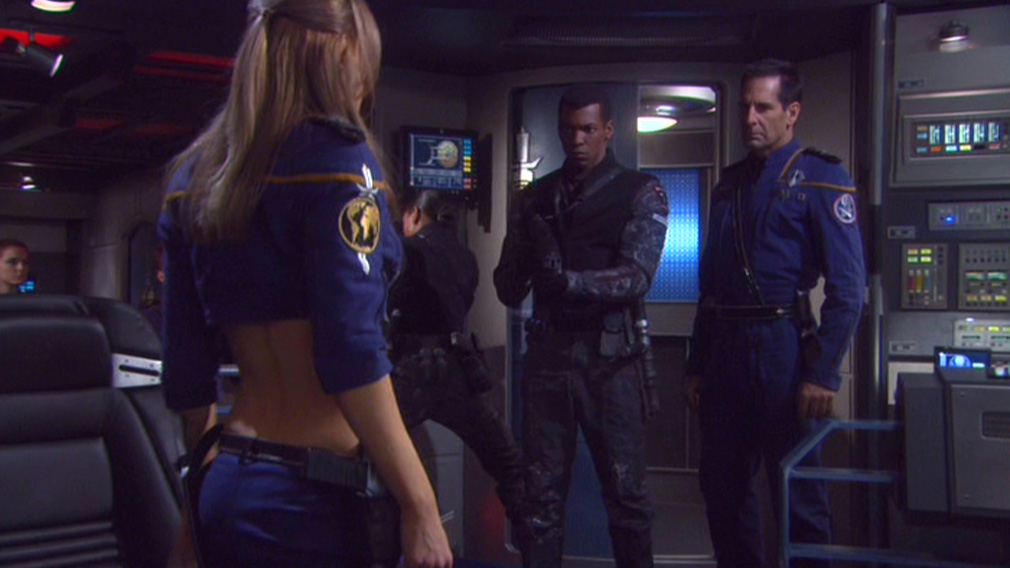
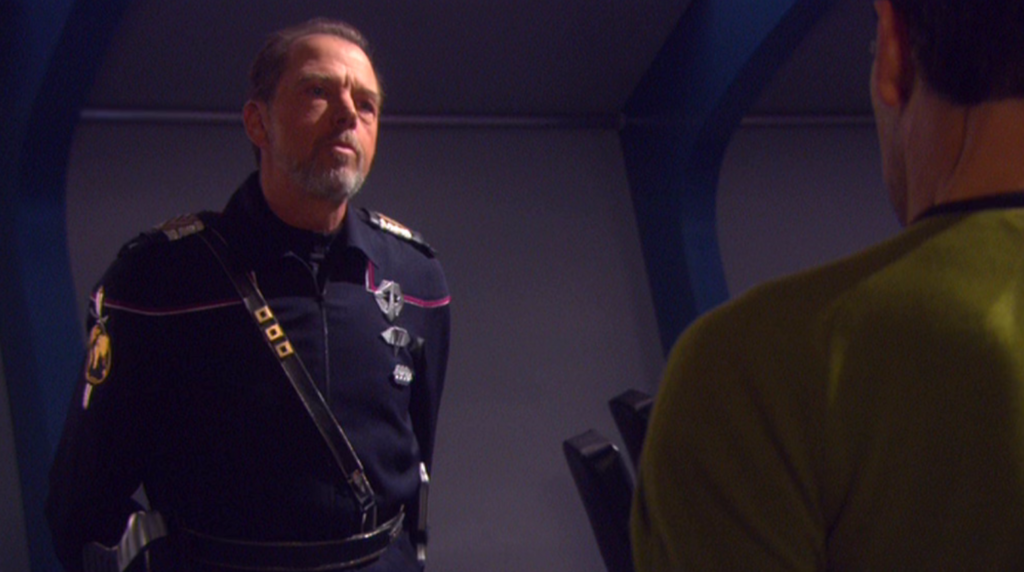
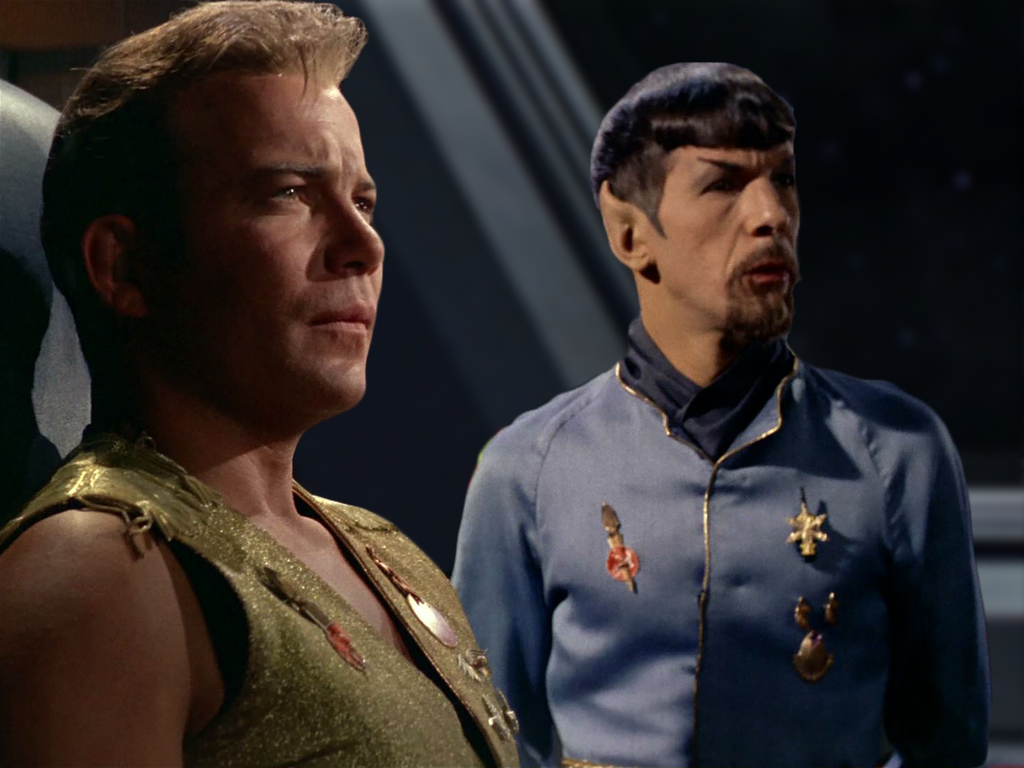
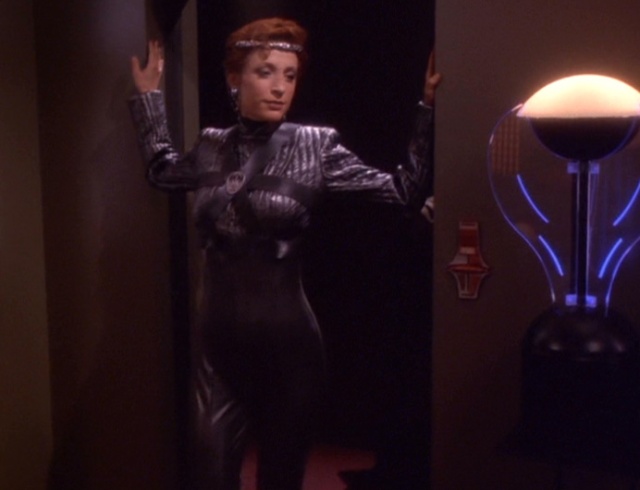
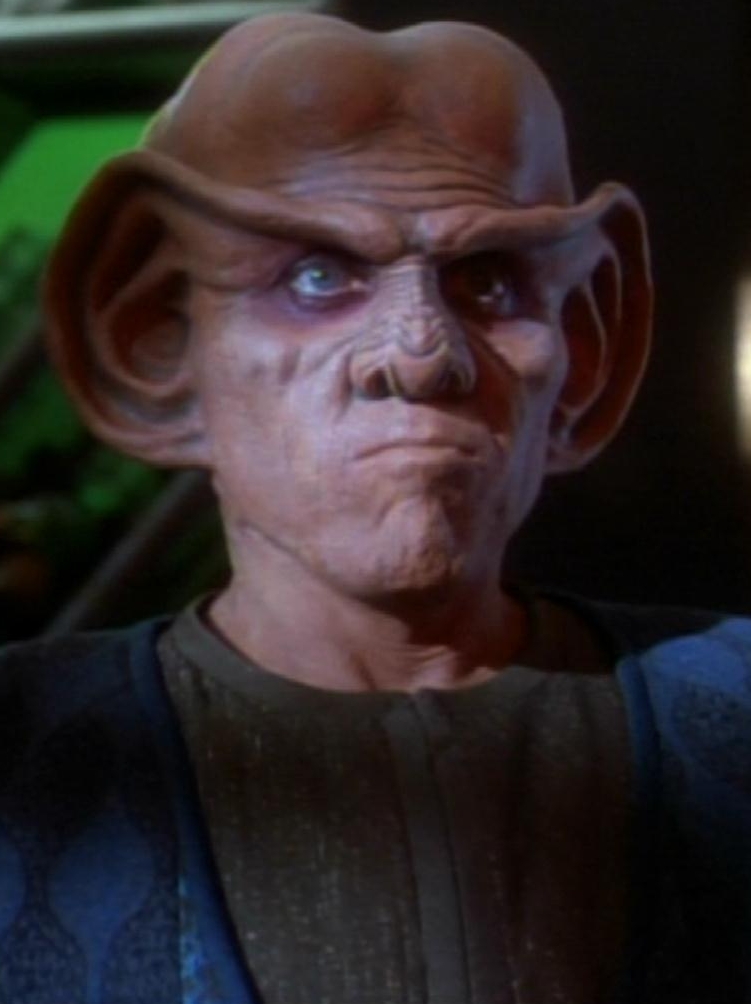
I’m not sure that MU Kira and Odo were portrayed in bondage gear as much as they were slightly punk / goth…I know that particularly goth clothing does have a shared aesthetic with bdsm but they are not synonymous. Goths and punks embrace counter culture (and also ime tend to be more sexually open), so it’s no massive surprise that it would be used as the antithesis of the straight-laced federation.
I agree with what you present here for the larger society. Although for myself, I actually enjoy the costumes. I think they’re more freeing than the studgy uniforms of the “good” or prime universe. Of course, the problem with the Mirror universe is lacking the choice of what you wear.
I was surprised the MU uniforms in Discovery did NOT have crop tops. Did you feel the same way and would you have preferred that ENT went in that direction? I didn’t see any alternative to what ENT did (and I doubt they were going for shock value you described). But DISCO proved me wrong.